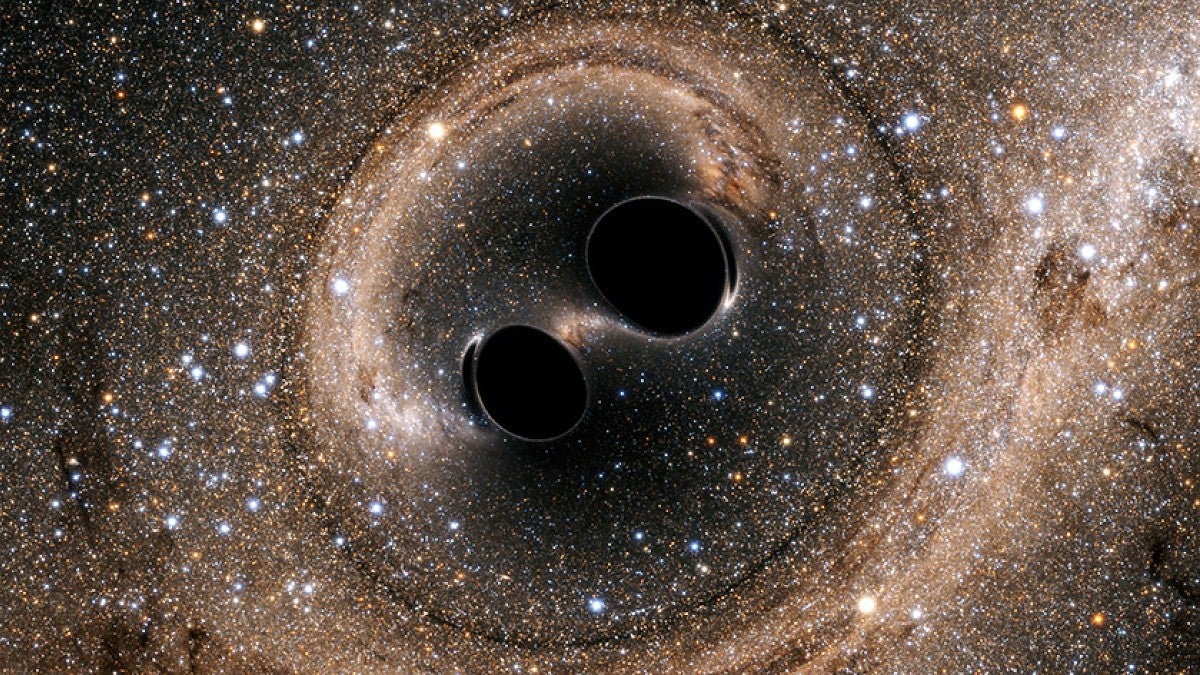The confirmation of 39 new gravitational waves collected this year by LIGO and Virgo detectors in the U.S. and Europe is revealing the diversity of black holes in the universe, says a University of Oregon postdoctoral researcher who helped to unravel the data.
The new events mean 50 gravitational waves have been identified since the first was recorded in 2015 by the National Science Foundation-funded Laser Interferometer Gravitational-wave Observatory sites in Hanford, Washington, and Livingston, Louisiana. The Virgo interferometer in Italy also collaborates with the U.S. program.
Gravitational waves are minute vibrations of spacetime that were predicted in 1915 in Albert Einstein’s theory of general relativity. The merger of massive compact objects, such as black holes and neutron stars, can set off detectable levels of these spacetime disturbances.
“We now know of nearly 100 individual black holes through these 50 gravitational waves,” said Zoheyr Doctor, who joined the UO in summer 2019 to work in professor Ben Farr’s group in the Institute for Fundamental Science after earning a doctorate from the University of Chicago.
“We've seen mergers of two smaller black holes, each a few times the mass of the sun, and some mergers all the way up to tens or even one hundred times the mass of the sun,” Doctor said. “We are also seeing more examples of black holes that are spinning, which will help us disentangle what kinds of galaxies and environments these extreme objects are forming in.”
The gravitational wave events seen so far have included binary black hole mergers, binary neutron stars and, possibly, a neutron star-black hole binary. Most of the newest observations were made early in the 2019 run. The new run is part of the latest catalog of waves compiled by the LIGO-Virgo collaboration.
Doctor had a lead role, along with Farr, an assistant professor in the Department of Physics, in the analyses of data related to the astrophysical properties of the new observations. That work provides estimates of the masses, spins and distances from Earth of the black holes and neutron stars. Farr headed the LIGO-Virgo collaboration’s compact binary group, which interpreted the data, until June. More than 1,000 collaborating scientists helped in the cataloging, Farr said.
In addition to Doctor, the UO has 14 researchers in the LIGO-Virgo collaboration, including eight graduate students and one undergraduate student working with faculty members Farr, Robert Schofield, Jim Brau and Ray Frey.
Schofield was testing equipment at the Livingston detector when the first gravitational wave was recorded on Sept. 14, 2015, and has been the leader in understanding the coupling of the detectors to the local environment.
The jump in detections was made possible by upgrades to the LIGO and Virgo observatories, including the addition of more powerful lasers and mirrors, which have reduced noise and coupling to the environment and increased sensitivity, changes that enhanced data quality and search capabilities.
“I've been working with my LIGO and Virgo collaborators on analyzing gravitational waves for over five years now, and I'm amazed that we can measure minute disturbances in spacetime coming from billions of light years away,” Doctor said. “It's exciting to see this transition to the era where we're talking about more black hole mergers and gravitational waves than you can count on your fingers and toes. It's really a testament to the magnitude of theoretical and experimental advances over the last century as well as to the incredible international teamwork needed for these kinds of discoveries.”
—By Jim Barlow, University Communications


